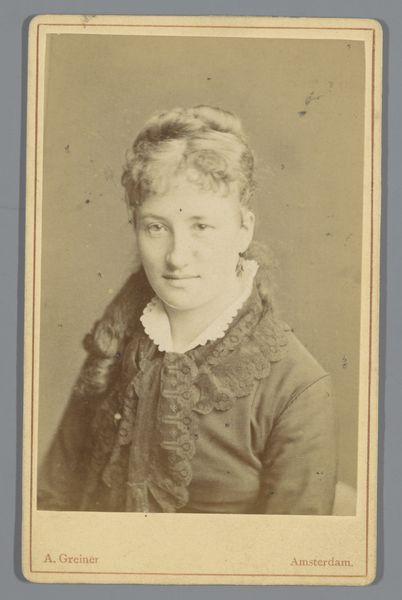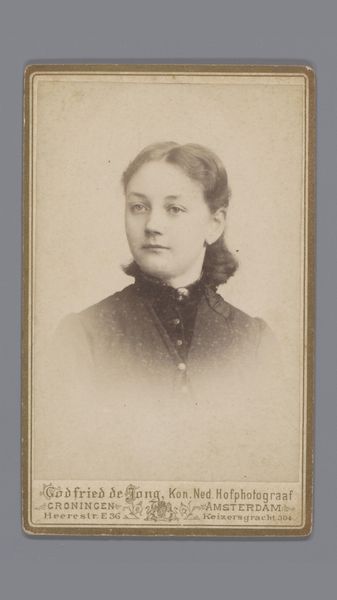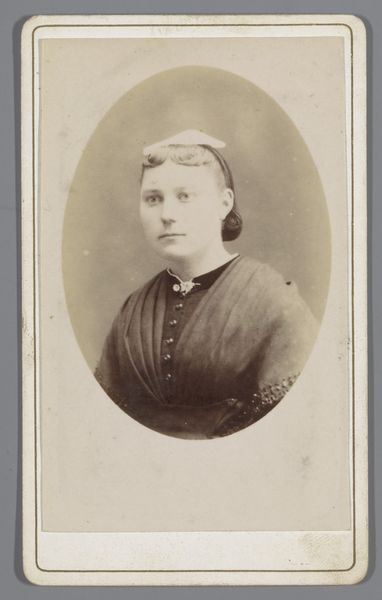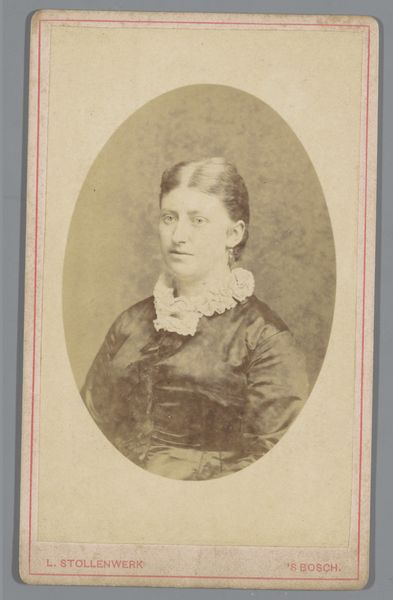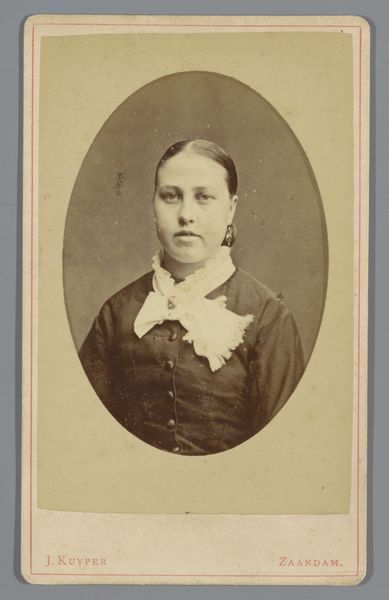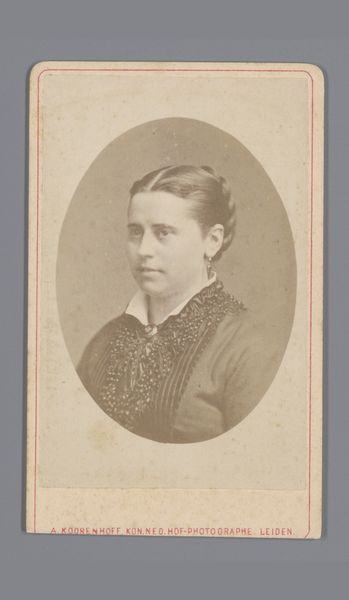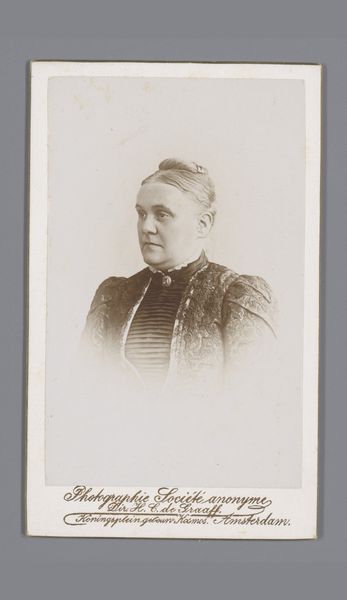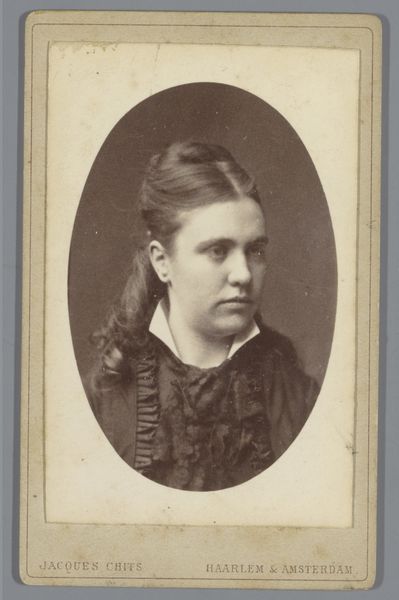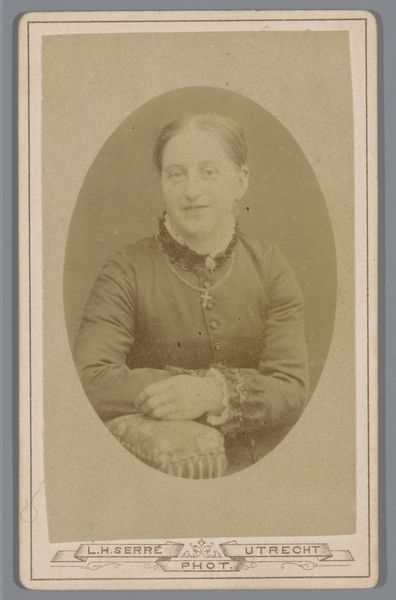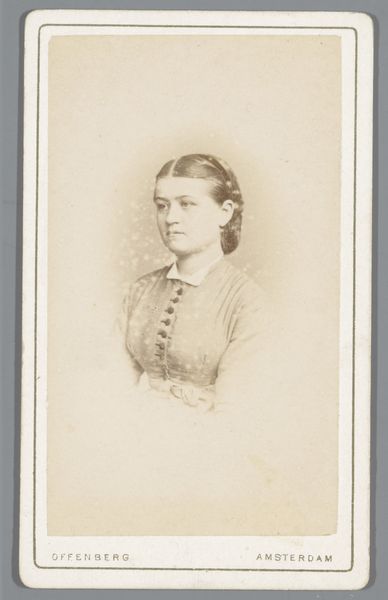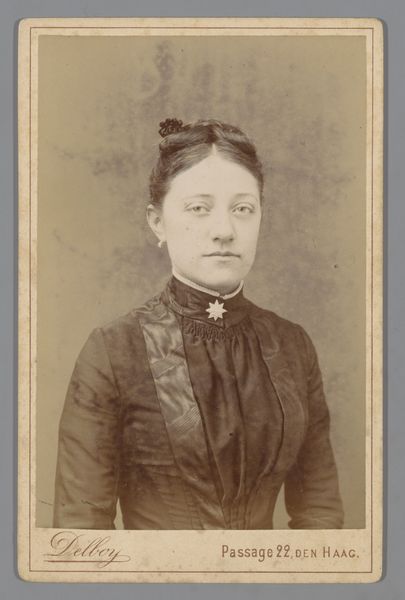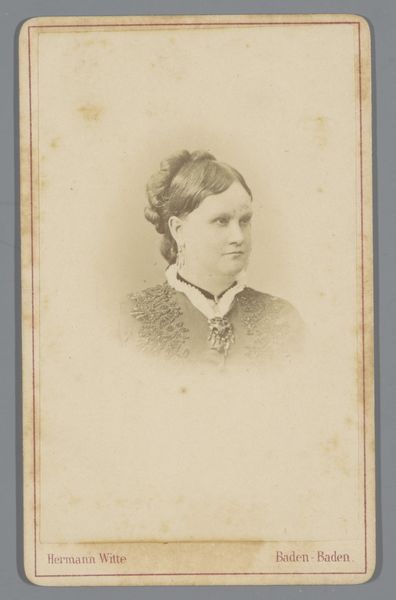
photography
#
portrait
#
photography
#
realism
Dimensions: height 105 mm, width 62 mm
Copyright: Rijks Museum: Open Domain
Editor: Here we have a photograph by Friedrich Julius von Kolkow, circa 1879 to 1896, entitled "Portrait of an Unknown Woman". I am struck by the use of light and shadow, which creates a sense of depth despite the limited tonal range. What structural elements stand out to you in this image? Curator: The oval frame within the rectangular photographic card immediately establishes a structure predicated on contrasting geometric forms. The subdued palette—varying shades of sepia—pushes the viewer to assess the compositional strategy. Observe the textures created by the ruffles of the garment; these intricate surface variations activate the visual field and counter the simplicity of the oval backdrop. Editor: It seems the symmetry is intentional, contributing to the rather reserved mood of the portrait. Curator: Precisely. Symmetry functions here as more than just an aesthetic principle; it connotes a formal restraint and self-possession in the sitter’s portrayal. The direct gaze, centrally positioned within the oval, anchors the composition. Notice the delicate, almost imperceptible asymmetry in her hairstyle, providing a subtle counterpoint. Editor: That's interesting! I hadn't focused on that subtle break in symmetry. It gives her portrait a bit of liveliness that I missed before. Curator: Indeed, the success of this portrait lies in von Kolkow’s management of these tensions: symmetry against asymmetry, the two-dimensional photographic surface versus the illusion of depth. A structured approach unlocks these nuances. Editor: Thinking about the photograph as a series of forms in dialogue gives me an interesting way to understand how portraits communicate, and the photographer's technical intentions in choosing structure and tone. Thank you for sharing this Formalist approach!
Comments
No comments
Be the first to comment and join the conversation on the ultimate creative platform.
